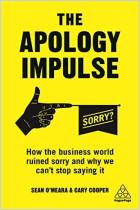加入 getAbstract 阅读摘要

加入 getAbstract 阅读摘要
John Kador
Effective Apology
Mending Fences, Building Bridges, and Restoring Trust
Berrett-Koehler, 2009
看看什么内容?
Contrary to the popular movie Love Story, maintaining great relationships sometimes does mean having to say, “I’m sorry.”
Recommendation
Mistakes and misconduct are no longer private matters. With video-sharing websites and the proliferation of cellphone cameras, technology can expose every blunder and make it fodder for public opinion. Now, more than ever, it’s crucial to admit when you’ve made a mistake, earnestly say you’re sorry and back up your regret with action. John Kador explains how. He outlines the five elements of an effective apology – “recognition, responsibility, remorse, restitution and repetition” – and describes how to use them. He reinforces his suggestions with real examples of people who’ve succeeded or failed in an attempt to apologize. getAbstract recommends this book to managers in every field and to anyone who wants to build strong relationships. And if it does not meet your needs, well, someone owes you an apology.
Summary
About the Author
John Kador is author of several books, including The Manager’s Book of Questions and the New York Times bestseller Net Ready: Strategies for Success in the E-conomy. He’s ghostwritten books for several Fortune 1000 executives, and is a speaker and consultant on leadership issues.























Comment on this summary